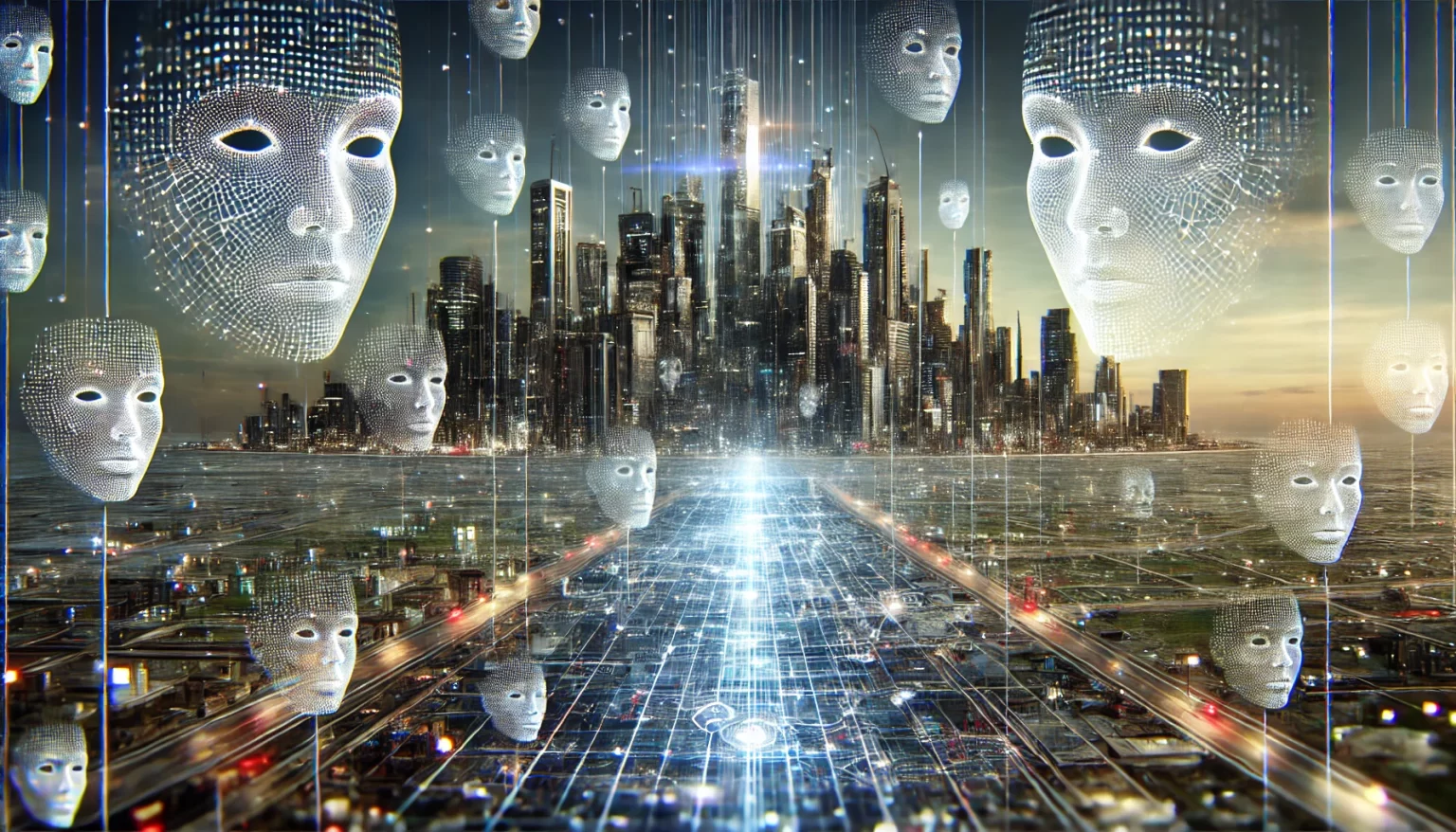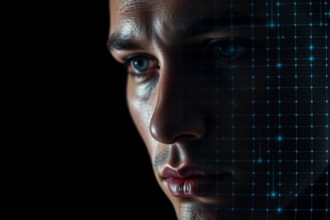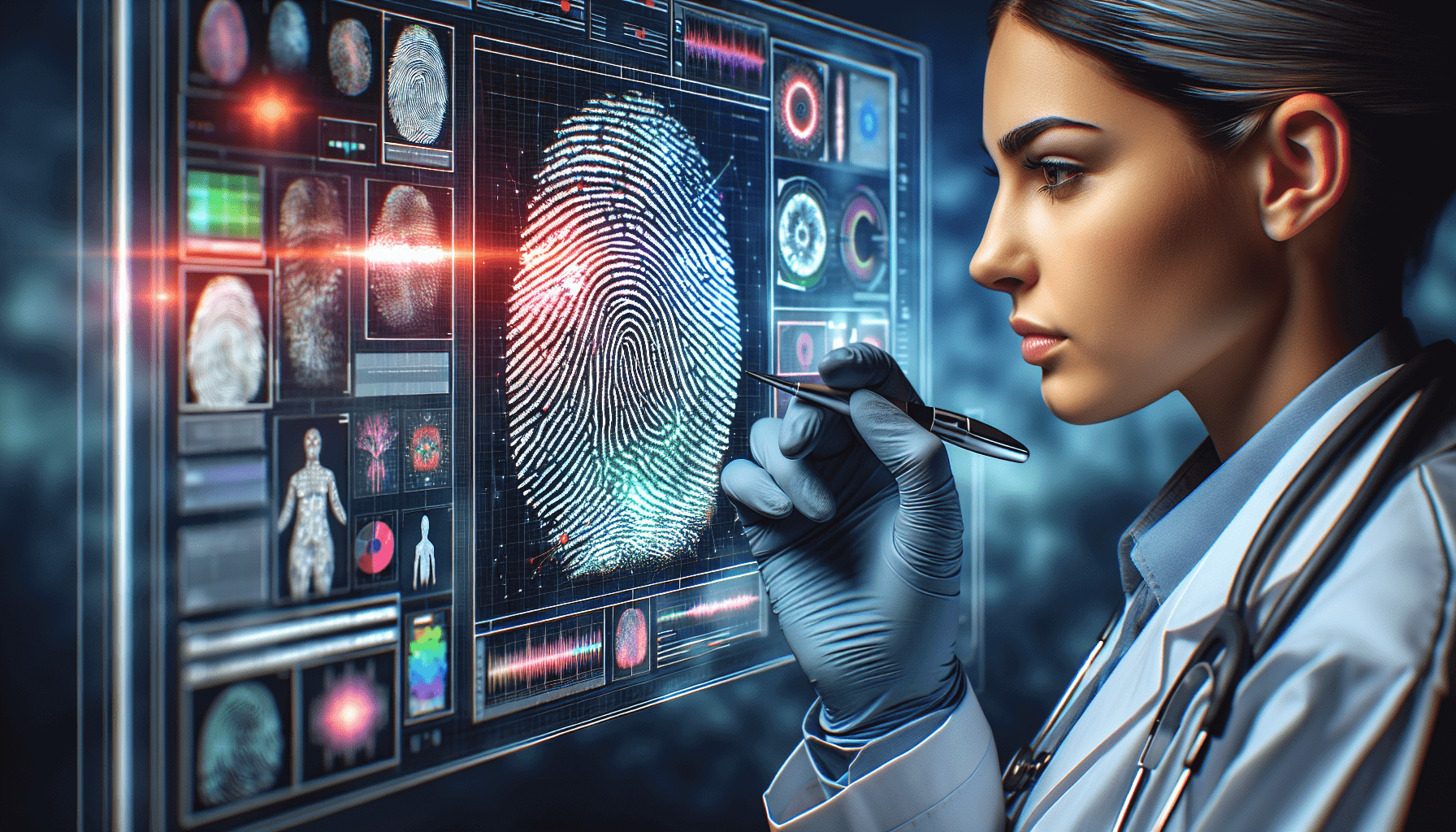An Intriguing Historical Prelude
While the concept of facial recognition may seem like a contemporary marvel, its origins can be traced back to the 1960s. Between 1964 and 1966, a pioneering research team led by Woodrow Bledsoe conducted a groundbreaking series of experiments. Their objective? To determine whether programmed computers could successfully recognize human faces, a feat that seemed almost inconceivable at the time. This seminal endeavor marked the inception of a technological revolution that would redefine the realms of security, surveillance, and identity verification.
- An Intriguing Historical Prelude
- Demystifying Facial Recognition: A Multifaceted Biometric Marvel
- The Intricate Mechanics of Facial Recognition: A Three-Pronged Approach
- Detection: Locating Faces in the Digital Realm
- Analysis: Decoding the Intricate Geometry of the Human Face
- Recognition: Matching Faceprints with Existing Databases
- Diverse Applications: Facial Recognition’s Versatile Utility
- Law Enforcement and Public Safety
- Cybersecurity and Access Control
- Fraud Detection and Identity Verification
- Banking and Financial Services
- Healthcare and Patient Care
- Border Control and Travel
- Retail and Customer Experience
- Marketing and Advertising
- The Advantages of Facial Recognition: Unraveling the Benefits
- Improved Security and Fraud Prevention
- Convenience and Streamlined Processes
- Accurate Identification and Verification
- Integration and Compatibility
- Objective Identification: Striving for Fairness
- Addressing Concerns and Ethical Considerations
- Privacy and Surveillance Concerns
- Accuracy and Bias Challenges
- Data Security and Integrity
- Legal and Regulatory Frameworks
- The Future of Facial Recognition: Navigating the Landscape
- FAQs:
- What are the origins of facial recognition technology?
- How does modern facial recognition technology work?
- What are some key applications of facial recognition technology?
- What are some benefits of facial recognition technology?
- Does facial recognition have accuracy or bias issues?
- What ethical and privacy concerns are associated with facial recognition?
Demystifying Facial Recognition: A Multifaceted Biometric Marvel
In the modern era, facial recognition has emerged as a cutting-edge biometric technology that harnesses the unique characteristics and features of an individual’s face to authenticate or verify their identity. This innovative approach falls under the broader umbrella of biometric security, alongside other modalities such as fingerprint recognition, voice recognition, and iris or retina scanning.
Recent advancements in technology have significantly expanded the capabilities of facial recognition systems, enabling them to identify individuals in real-time, as well as in videos and digital images. This growth is reflected in the market: the global facial recognition market was estimated at approximately USD 8.58 billion in 2025 and is projected to reach USD 18.28 billion by 2030, growing at a CompoundIn scientific terminology, a "compound" refers to a substance formed by the combination of two or more different elements or molecules. These elements or molecules can be chemically bonded together to create a new substance Read Full Definition Annual Growth Rate (CAGR) of 16.33% during this period. By harnessing the power of unique facial features, this technology offers a versatile and robust approach to identity verification and security, making it increasingly indispensable in various sectors.
To delve deeper into how Artificial Intelligence specifically enhances the precision, speed, and capabilities of modern facial recognition, particularly in areas like forensic investigations, explore our article on AI in Facial Recognition: Revolutionizing Security, Privacy, and Forensics.
The Intricate Mechanics of Facial Recognition: A Three-Pronged Approach
To fully comprehend the advantages of facial recognition, it is essential to understand the intricate mechanics that underpin its functionality. This technology employs a three-pronged approach, encompassing detection, analysis, and recognition
Detection: Locating Faces in the Digital Realm
The first step in the facial recognition process is detection, which involves locating and identifying faces within a given image or video frame. Leveraging the power of computer vision, these systems can detect individual faces, even in scenarios where multiple individuals are present. As the technology has evolved, it has become adept at collecting facial data Information in analog or digital form that can be transmitted or processed. Read Full Definition from both frontal and side profiles, enhancing its versatility and accuracyIn scientific and measurement contexts, "accuracy" refers to the degree of proximity or closeness between a measured value and the true or actual value of the measured quantity. Accuracy indicates how well a measurement reflects Read Full Definition.
Information in analog or digital form that can be transmitted or processed. Read Full Definition from both frontal and side profiles, enhancing its versatility and accuracyIn scientific and measurement contexts, "accuracy" refers to the degree of proximity or closeness between a measured value and the true or actual value of the measured quantity. Accuracy indicates how well a measurement reflects Read Full Definition.
Analysis: Decoding the Intricate Geometry of the Human Face
Once a face has been detected, the facial recognition system initiates the analysis phase. This stage involves reading and mapping out the intricate geometry of the face, including facial expressions, contours, and various measurements. The system meticulously examines a myriad of facial features, such as the distance between the eyes, the depth of the eye sockets, the shape of the cheekbones, the contour of the lips and chin, and the distance between the forehead and chin. By analyzing these intricate details, the system can create a unique digital representation of an individual’s face, known as a faceprint.
Recognition: Matching Faceprints with Existing Databases
In the final stage of the process, the faceprint generated during the analysis phase is compared against existing databases of known faces. These databases can range from social media profiles and driver’s license repositories to law enforcement mugshot archives. If a match is found between the faceprint and an existing entry in the database, the system can provide a positive identification, subject to further verification and investigation.
Diverse Applications: Facial Recognition’s Versatile Utility
The versatility of facial recognition technology has enabled its widespread adoption across various domains, each leveraging its unique capabilities to enhance security, convenience, and efficiency.
Law Enforcement and Public Safety
One of the most prominent applications of facial recognition lies within the realm of law enforcement and public safety. Police departments and law enforcement agencies worldwide have adopted this technology as a powerful tool to combat crime and enhance community safety. For example, U.S. Customs and Border Protection (CBP) has utilized biometric facial comparison technology to process over 697 million travelers and reportedly stopped more than 2000 impostors from entering the U.S. as of 2025. By comparing the faces of criminal suspects against vast databases, law enforcement officials can quickly identify and apprehend individuals involved in criminal activities.
Cybersecurity and Access Control
In the digital age, where data breaches and unauthorized access pose significant risks, facial recognition has emerged as a robust solution for cybersecurity and access control. Many organizations now utilize this technology as an alternative to traditional passwords, allowing authorized individuals to securely access devices, applications, and sensitive data through facial verification. This not only enhances security but also offers a seamless and convenient user experience. Approximately 72% of Americans approve of facial recognition for building access.
Fraud Detection and Identity Verification
Facial recognition has proven invaluable in the fight against fraud and identity theft. Online platforms and financial institutions can leverage this technology to verify the identities of users creating new accounts or conducting transactions. By comparing the user’s face against a database of known identities, organizations can quickly detect and mitigate potential instances of fraud or suspicious activity. For example, some major banks that have implemented this technology have reported a staggering 91% reduction in fraudulent account access attempts.
Banking and Financial Services
The banking and financial services sector has embraced facial recognition as a secure and convenient alternative to traditional authenticationVerifying the identity of a user, process, or device, often as a prerequisite to allowing access to resources in an information system. Read Full Definition methods. Approximately 79% of financial organizations are either already implementing or planning to implement biometric authentication solutions within the next year. By enabling customers to authorize transactions through facial recognition, these institutions can eliminate the need for passwords or physical tokens, which are susceptible to theft or compromise. This not only enhances security but also streamlines the customer experience, making transactions more efficient and user-friendly.
Healthcare and Patient Care
In the healthcare domain, facial recognition has emerged as a valuable tool for enhancing patient care and streamlining administrative processes. Healthcare providers can utilize this technology to securely access patient records, streamline registration processes, and even detect emotional cues or signs of pain in patients. Additionally, facial recognition can aid in the identification of specific genetic disorders with high accuracy, enabling more targeted and personalized treatment approaches. Studies suggest this sector is expected to witness significant growth, with a projected CAGR of 17.5% over the forecast period.
Border Control and Travel
Facial recognition has become a familiar sight at airports and border crossings around the world. By enabling travelers to bypass traditional document checks and proceed through automated ePassport control systems, this technology not only enhances security but also significantly reduces wait times and improves the overall travel experience. For example, the TSA has rolled out facial recognition technology to 25 major airports and plans to implement it in hundreds more by the end of 2025, aiming to reduce the average passenger verification time to eight seconds. Furthermore, facial recognition can aid in identifying individuals on watch lists or those posing potential security threats, thereby further bolstering border control efforts.
Retail and Customer Experience
The retail sector has embraced facial recognition as a means to enhance customer experiences and combat organized retail crime. Retailers can leverage this technology to identify known shoplifters or individuals with a history of fraud, enabling proactive measures to mitigate potential losses. Some reports indicate that nearly 30% of retail firms use this technology to track customers. Additionally, facial recognition can be integrated into kiosks and self-checkout systems, enabling personalized product recommendations and seamless payment processes, ultimately improving customer satisfaction and loyalty
Marketing and Advertising
In the realm of marketing and advertising, facial recognition has opened up new avenues for targeted and personalized campaigns. By analyzing facial expressions and emotional cues, brands can gauge audience reactions to advertisements, product placements, and marketing materials. This valuable data can inform future strategies and optimize campaigns for maximum impact and engagement.
/face
The Advantages of Facial Recognition: Unraveling the Benefits
Facial recognition technology offers a myriad of advantages that have contributed to its widespread adoption and continued evolution.
Improved Security and Fraud Prevention
One of the most significant advantages of facial recognition is its ability to enhance security measures and prevent fraud. By accurately identifying individuals, this technology can thwart unauthorized access, detect potential threats, and mitigate the risk of identity theft or impersonation. This heightened level of security is particularly valuable in sectors such as law enforcement, banking, and cybersecurity, where the consequences of breaches can be severe.
Convenience and Streamlined Processes
Facial recognition technology offers a seamless and convenient user experience, eliminating the need for traditional authentication methods like passwords or physical tokens. This not only enhances user satisfaction but also streamlines various processes, such as border control, retail transactions, and healthcare administration. For instance, biometric authentication can reduce average transaction time by 53% compared to traditional methods. By reducing wait times and simplifying verification procedures, facial recognition contributes to increased efficiency and productivity.
Accurate Identification and Verification
Compared to other biometric modalities, facial recognition is considered one of the most accurate and reliable methods for identifying and verifying individuals. In ideal scenarios, some algorithms achieve accuracy rates above 99.5%. For example, Face ID on iPhones has less than a one-in-a-million chance of being unlocked by someone else. By leveraging the unique characteristics of an individual’s face, this technology can provide a high degree of precision, reducing the risk of false positives or misidentifications in well-controlled environments.
Integration and Compatibility
Facial recognition systems are highly compatible and can be seamlessly integrated with existing security software and infrastructure. This ease of integration minimizes the need for significant additional investments, making the technology accessible and cost-effective for organizations of varying sizes and budgets.
Objective Identification: Striving for Fairness
While human observation can be influenced by subjective biases, facial recognition technology aims to rely on objective, data-driven algorithms for identification. The goal is to reduce human error and provide a consistent basis for verification. As the technology continues to evolve, significant efforts are being made to develop and refine algorithms that promote fairness and minimize the potential for discriminatory outcomes, contributing to a more equitable process for identification and verification.
Addressing Concerns and Ethical Considerations
While facial recognition technology offers numerous benefits, it is not without its challenges and ethical considerations. Privacy advocates and civil liberties organizations have raised concerns about the potential for misuse, surveillance overreach, and the erosion of individual privacy rights.
Privacy and Surveillance Concerns
One of the primary concerns surrounding facial recognition technology is the potential for mass surveillance and the infringement of individual privacy rights. As technology becomes more widespread and integrated into public spaces, there is a risk that individuals may be tracked and monitored without their knowledge or consent, raising significant ethical and legal concerns. For example, while 81% of Americans approve of using FRT for passport control, a significant 68% disapprove of police scanning people with the technology on the street.
Accuracy and Bias Challenges
Despite the advancements in facial recognition technology, concerns have been raised regarding its accuracy and potential for biasThe difference between the expectation of the test results and an accepted reference value. Read Full Definition. Studies, such as the widely cited “Gender Shades” research from 2018, have shown that some facial recognition algorithms may exhibit significantly higher error rates when identifying individuals from certain demographic groups. For instance, the error rate for darker-skinned women has been found to be as high as 34.7%, compared to less than 1% for lighter-skinned men in some algorithms. Similarly, federal government tests in 2019 confirmed that many algorithms exhibit demographic differences, with higher false positive rates for Asians, African Americans, and American Indians compared to white individuals. Additionally, there are higher rates for women compared to men, as well as for children and the elderly compared to middle-aged adults. These disparities can lead to wrongful arrests and exacerbate existing inequalities in the criminal justice system. Addressing these biases and ensuring equitable and accurate performance across diverse populations is a critical challenge that must be actively addressed through more diverse training data and rigorous testing.
Data Security and Integrity
As with any biometric technology, the security and integrity of the data collected and stored by facial recognition systems are of paramount importance. Robust data protection measures and stringent security protocols must be implemented to prevent unauthorized access, data breaches, or the misuse of sensitive personal information.
Legal and Regulatory Frameworks
The rapid proliferation of facial recognition technology has outpaced the development of legal and regulatory frameworks to govern its use. Governments and policymakers around the world are grappling with the challenge of striking a balance between leveraging the benefits of this technology and protecting individual rights and civil liberties. Developing clear guidelines and regulations, such as the EU’s GDPR or state-specific biometric privacy acts, is crucial to ensuring the responsible and ethical use of facial recognition.
For a detailed discussion on the ethical considerations and regulatory landscape specifically concerning AI-powered facial recognition, see our dedicated post on AI in Facial Recognition: Revolutionizing Security, Privacy, and Forensics.
The Future of Facial Recognition: Navigating the Landscape
As facial recognition technology continues to evolve and become more ubiquitous, it is essential to navigate the landscape responsibly and address the challenges and concerns that arise. Collaboration between technology providers, policymakers, and civil society organizations is crucial to ensure that the benefits of this technology are maximized while mitigating potential risks and ethical concerns.
Ongoing research and development efforts should focus on improving accuracy, reducing biases, and enhancing data security measures to ensure the integrity of data. Additionally, fostering public awareness and education about the capabilities and limitations of facial recognition technology can help alleviate misconceptions and promote informed decision-making.
Ultimately, the future of facial recognition lies in striking a delicate balance between leveraging its powerful capabilities and upholding fundamental rights and ethical principles. By embracing a responsible and thoughtful approach, we can harness the transformative potential of this technology while safeguarding individual privacy, civil liberties, and the values that underpin our democratic societies.
FAQs:
What are the origins of facial recognition technology?
Facial recognition technology originated in the 1960s, with pioneering experiments led by Woodrow Bledsoe between 1964 and 1966, aimed at determining whether programmed computers could recognize human faces successfully, marking the beginning of a revolution in security and identity verification.
How does modern facial recognition technology work?
Modern facial recognition employs a three-stage process: detection, analysis, and recognition. First, it locates faces in images or videos. Then, it analyzes facial features to create a unique faceprint. Finally, it matches this faceprint against databases for identification or verification.
What are some key applications of facial recognition technology?
Facial recognition is widely used in law enforcement for security purposes, in cybersecurity and access control, fraud detection, banking, healthcare, border control, retail, marketing, and to improve travel experiences at airports by speeding up verification processes.
What are some benefits of facial recognition technology?
The technology enhances security by preventing fraud and unauthorized access, offers convenience through streamlined processes, provides highly accurate identification, and seamlessly integrates with existing systems to improve efficiency across various sectors.
Does facial recognition have accuracy or bias issues?
While facial recognition technology has achieved high accuracy rates in ideal conditions (e.g., above 99.5% in controlled environments), studies have shown that some algorithms can exhibit higher error rates and biases when identifying individuals from certain demographic groups, particularly darker-skinned individuals or women. Ongoing research focuses on mitigating these biases.
What ethical and privacy concerns are associated with facial recognition?
Concerns include potential misuse for mass surveillance, invasion of privacy rights, accuracy issues involving biases and errors, data security risks, and the need for appropriate legal and regulatory frameworks to ensure responsible use and safeguarding civil liberties.












